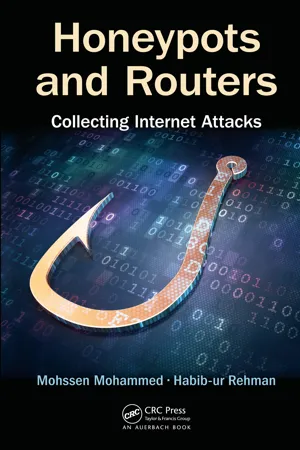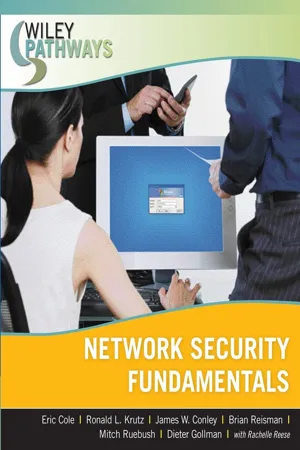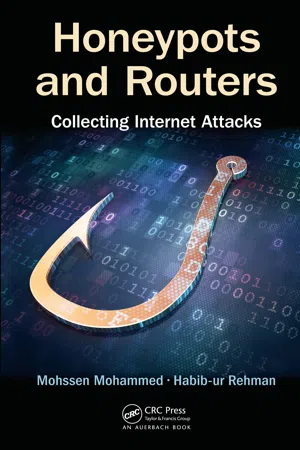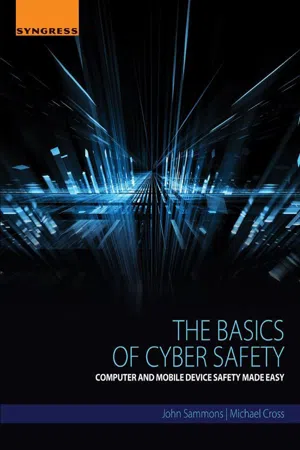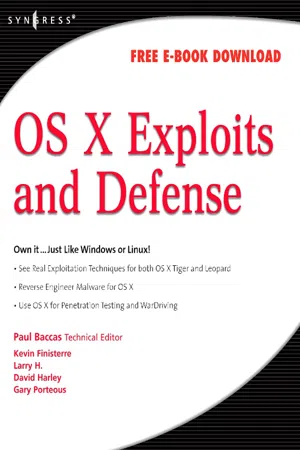Computer Science
Anti Malware Software
Anti-malware software is a type of computer program designed to detect, prevent, and remove malicious software, such as viruses, worms, and spyware, from a computer system. It works by scanning files and processes for known patterns of malicious code and can also provide real-time protection by monitoring system activity. This software is essential for maintaining the security and integrity of computer systems.
Written by Perlego with AI-assistance
Related key terms
1 of 5
10 Key excerpts on "Anti Malware Software"
- No longer available |Learn more
- (Author)
- 2014(Publication Date)
- University Publications(Publisher)
Other approaches are: • Various forms of virtualization, allowing the code unlimited access only to virtual resources • Various forms of sandbox or jail • The security functions of Java, in java.security Such approaches, however, if not fully integrated with the operating system, would reduplicate effort and not be universally applied, both of which would be detrimental to security. ________________________ WORLD TECHNOLOGIES ________________________ Anti-malware programs As malware attacks become more frequent, attention has begun to shift from viruses and spyware protection, to malware protection, and programs have been developed to specifically combat them. Anti-malware programs can combat malware in two ways: 1. They can provide real time protection against the installation of malware software on a computer. This type of spyware protection works the same way as that of antivirus protection in that the anti-malware software scans all incoming network data for malware software and blocks any threats it comes across. 2. Anti-malware software programs can be used solely for detection and removal of malware software that has already been installed onto a computer. This type of malware protection is normally much easier to use and more popular. This type of anti-malware software scans the contents of the Windows registry, operating system files, and installed programs on a computer and will provide a list of any threats found, allowing the user to choose which files to delete or keep, or to compare this list to a list of known malware components, removing files that match. Real-time protection from malware works identically to real-time antivirus protection: the software scans disk files at download time, and blocks the activity of components known to represent malware. In some cases, it may also intercept attempts to install start-up items or to modify browser settings. - eBook - ePub
Honeypots and Routers
Collecting Internet Attacks
- Mohssen Mohammed, Habib-ur Rehman(Authors)
- 2015(Publication Date)
- Auerbach Publications(Publisher)
Chapter 7 discusses real designed network to collect attacks of zero-day polymorphic worms. This will provide details on how the theoretical knowledge shared in earlier chapters can be practically implemented.4.1 Introduction
Malware is a major threat to the security of IT infrastructure of an organization and could cause huge financial loss. Thus, the protection of network and other IT resources from this threat is of extreme importance. This chapter provides an overview about malware and how we can protect our machines against them [4 ].The word malware is short for malicious software, and it refers to any software that disrupts the normal operation of a computing device or collects sensitive information from it or gains access to systems that are not in public domain. The use of the term malware is limited to the bad intent, that is, if a software affects a system accidentally or unintentionally, then it would not be considered as malware. An alternate term that includes both kind of software, that is, harming the system intentionally or unintentionally is badware.Malware is used to achieve malicious objectives in several ways such as to access unauthorized data/information, secretly monitor the activities of the users of a computer, harm or sabotage the system, or extort business transactions [1 ].Malware are generally categorized as follows:- Adware
- Ransomware
- Scareware
- Spyware
- Trojan horses
- Viruses
- Worms
- Other malicious programs
Malware can be in the form of active content, executable code, scripts, or other software. The usual approach of attack is to embed the malware in some other non malicious-looking software. Trojans and worms are the most active forms of malware as compared to viruses.The following are the software that can be used to protect networks against malware [4 ]:- Intrusion detection and prevention systems
- Antivirus
- Antimalware
- Firewalls
4.2 Computer Viruses
Computer viruses are small software or programs designed to affect the routine operation of a computer system as well as to spread from one computer to the other [4 - eBook - PDF
- Eric Cole, Ronald L. Krutz, James Conley, Brian Reisman, Mitch Ruebush, Dieter Gollmann, Rachelle Reese(Authors)
- 2012(Publication Date)
- Wiley(Publisher)
3. Deploy new signatures. 4. Continue to monitor. Finally, it is important that the computers be monitored periodically to ensure that the new antivirus signatures are being distributed properly. When the next big virus or worm hits is not the time to find a flaw in the system. 9.2.2 Anti-spyware Anti-spyware software monitors a computer for spyware and allows you to remove it. There are a number of anti-spyware applications. In fact, some com- panies like Symantec and Microsoft sell an integrated package that includes antivirus and anti-spyware software. A term describing software that protects against a variety of malware is anti-malware. As with an antivirus application, you must keep your anti-spyware software up-to-date. 318 PROTECTING AGAINST MALWARE Some Internet service providers (ISPs) are so concerned about preventing malware that they offer security suites to their subscribers free of charge. 9.2.3 Computer Configuration Guidelines Another important way to guard against malware is to make sure client com- puters are hardened. Many of the same guidelines apply as for hardening servers, including the following: ▲ Remove unnecessary services and applications. ▲ Filter traffic. ▲ Implement access control. In this section, we’ll look at a few specific precautions: personal firewalls, limiting user rights, and disabling hidden file extensions. Personal Firewalls A personal firewall is software that runs on the user’s computer and blocks incoming and outgoing traffic. When used properly, a personal firewall can be very effective. For instance, a properly configured personal firewall can be very specific to a user’s need for LAN traffic. A good way to configure a personal fire- wall is to start by blocking all traffic in and out of the computer. As the user encounters warnings of attempted activity that has been blocked, the user can choose to permit that traffic. - eBook - PDF
Intelligent Security Systems
How Artificial Intelligence, Machine Learning and Data Science Work For and Against Computer Security
- Leon Reznik(Author)
- 2021(Publication Date)
- Wiley-IEEE Press(Publisher)
177 Intelligent Security Systems: How Artificial Intelligence, Machine Learning and Data Science Work For and Against Computer Security , First Edition. Leon Reznik. © 2022 by The Institute of Electrical and Electronics Engineers, Inc. Published 2022 by John Wiley & Sons, Inc. 4 4.1 Malware Definition, History, and Trends in Development ! Malware is any software written with the goal to perform some undesired action and to inflict certain damage to the computer systems or their protection services. The term was coined in 1990 by Yisreal Radai as short for “malicious software.” It became a generic umbrella name for all software with undesired intent within a system (Namanya et al. 2018). The harm examples might include stealing data stored in the system or decreasing performance of some system functionality. Typically, malware damages or modifies system software or data but not hardware. Beyond performing the damage, malware commonly has two other goals to make it more successful in their fight against system protection services: self ‐ propagation and obfuscation (Dornhackl et al. 2014). While self ‐ propagation may help with expediting an infection process, it may cause the major damage by itself with the goal to consume system resources, first of all, memory and communication channels bandwidth. By applying the obfuscation techniques, the malware may attempt to stay undetected by antivirus software. Although nowadays malware is classified into multiple categories described later in this chapter, it originated with a kind called a virus, which is still used in various presentations as a substitution to the whole term. A computer virus was originally defined as a computer program that has the capability of replicating itself and spreading from one computer to another. Computer viruses are relatively small software pieces in size. - eBook - PDF
Honeypots and Routers
Collecting Internet Attacks
- Mohssen Mohammed, Habib-ur Rehman(Authors)
- 2015(Publication Date)
- Auerbach Publications(Publisher)
Chapter 7 discusses real designed network to collect attacks of zero-day polymorphic worms. This will provide details on how the theoretical knowledge shared in earlier chapters can be practically implemented. 68 HONEYPOTS AND ROUTERS 4.1 Introduction Malware is a major threat to the security of IT infrastructure of an organization and could cause huge financial loss. Thus, the protec-tion of network and other IT resources from this threat is of extreme importance. This chapter provides an overview about malware and how we can protect our machines against them [4]. The word malware is short for malicious software, and it refers to any software that disrupts the normal operation of a computing device or collects sensitive information from it or gains access to systems that are not in public domain. The use of the term malware is limited to the bad intent, that is, if a software affects a system accidentally or unintentionally, then it would not be considered as malware. An alternate term that includes both kind of software, that is, harming the system intentionally or unintentionally is badware . Malware is used to achieve malicious objectives in several ways such as to access unauthorized data/information, secretly monitor the activities of the users of a computer, harm or sabotage the sys-tem, or extort business transactions [1]. Malware are generally categorized as follows: • Adware • Ransomware • Scareware • Spyware • Trojan horses • Viruses • Worms • Other malicious programs Malware can be in the form of active content, executable code, scripts, or other software. The usual approach of attack is to embed the malware in some other non malicious-looking software. Trojans and worms are the most active forms of malware as compared to viruses. The following are the software that can be used to protect networks against malware [4]: - No longer available |Learn more
- June Jamrich Parsons(Author)
- 2016(Publication Date)
- Cengage Learning EMEA(Publisher)
Malware is also a component of cyberwarfare attacks that pose a threat to national security. What are malware threats? Malware refers to any computer program designed to surreptitiously enter a digital device. Malware can be classified by the way in which it enters a device or by the type of activity it carries out. Common classifications of malware include viruses, worms, and trojans. Malware is created and unleashed by individuals referred to as hackers, crackers, black hats, or cybercriminals. Some malware is released as a prank. Other malware is designed to distribute political messages or disrupt operations at specific companies. In an increasing number of cases, mal-ware is exploited for monetary gain. Malware designed for identity theft or extortion has become a very real threat to individuals and corporations. Once malware infiltrates a device, its behavior depends on how it is pro-grammed. The action carried out by malware code is referred to as a payload . Malware can be used for many types of payloads, such as deleting files, recording login keystrokes, opening access for intruders, and allowing remote control of a device. Figure 7-10 lists some malware payloads that affect consumers. Terminology Malware is also referred to as malicious software . The term virus is also used as an all-encompassing term for software that secretly invades a digital device. - eBook - ePub
The Basics of Cyber Safety
Computer and Mobile Device Safety Made Easy
- John Sammons, Michael Cross(Authors)
- 2016(Publication Date)
- Syngress(Publisher)
By looking at this, we can see that Trojans are by far the biggest malware threat facing computer users. Since antivirus software focuses on protecting against Trojans, viruses, and worms, you definitely need one installed. However, while antivirus software prevents, detects, and removes a majority of infections, it will not catch everything. Companies that specialize in antimalware protection often focus on certain types of threats (such as spyware and adware), with some providing superior protection against zero-day or zero-hour malware that was previously unknown. While you need antivirus software running constantly in the background, you should also run antimalware software to catch threats your antivirus hasn’t detected. Some of the antimalware available include:Ad-aware (www.lavasoft.com ) is a free antivirus and antispyware tool, which also has premium versions that provide features like parental controls that prevent access to adult websites, email protection, and more.Spybot—Search & Destory (www.safer-networking.org ) is a free antimalware and antispyware tool, which also has premium versions that provide antivirus protection and additional features.Microsoft (http://www.microsoft.com/security/pc-security/malware-removal.aspx ) also provides an antimalware tool that is available on their site and is downloaded automatically as part of Windows Updates.Malwarebytes Anti-Malware (www.malwarebytes.org ) is a free antimalware tool that’s designed to remove malware and spyware from your computer. The premium version has additional features that provide additional scanning features and stop malware from activating. They also have additional free and premium tools to protect systems from exploits. Versions are available for Windows, Mac, and mobile devices running Android.While Microsoft deploys an antimalware tool to detect and remove known threats, you shouldn’t rely on this as your only means of defense. While included in your Windows Update once a month, this utility can’t compare to tools like Malwarebytes Anti-Malware, which updates itself on a recurring basis throughout the day to find the latest threats. Therefore, think of Microsoft’s utility as one layer of protection, but not the only one. Use other tools that can be scheduled to run daily or weekly or on-demand, in addition to a good antivirus program that runs in the background. - eBook - PDF
OS X Exploits and Defense
Own it...Just Like Windows or Linux!
- Chris Hurley, Johnny Long, David Harley, Paul Baccas, Kevin Finisterre, Larry H., Gary Porteus(Authors)
- 2011(Publication Date)
- Syngress(Publisher)
The assumption that Macs are safe until it becomes profitable to exploit Mac users, is much healthier than the assumption that Macs are and always have been invulnerable. However, Mac malware for criminal purposes is already here. Principles of Anti-malware Technology Just as there’s much more to the malware scene nowadays than viruses and worms, there’s also much more than AV software. There are many UNIX-y tools that deserve a place in a multi-layered Mac protection strategy, but rather few conventional tools for anti-malware defense apart from AV software. ˛ ˛ ˛ ˛ www.syngress.com 160 Chapter 4 • Malware Detection and the Mac Nowadays, commercial Mac anti-malware packages often detect Windows malware as well as Mac malware, but the reverse is often not true. Not all those vendors that have Mac products include default Mac malware detection on their products for other platforms. Antivirus software has always detected many types of object that weren’t viruses, and not even malicious, in some cases. The EICAR test file is not a virus, but has its uses for testing configuration and that a product is actually active. It is often misused, however, especially in testing. Signature detection is only one of the techniques used by AV scanners. Mainstream approaches include static signatures, generic signatures, heuristic analysis, behavior analysis, and dynamic analysis. Anti-malware Products Anti-malware products for pre-OS X versions are discussed at some length, not only for historical completeness, but also because there are still too many sites for comfort recommending products that are no longer very relevant. It’s possible that some may still have slight relevance to obsolete systems or systems that can still run the Classic environment, but users of such systems still need to be better informed as to their applicability. - eBook - PDF
Unauthorized Access
The Crisis in Online Privacy and Security
- Robert Sloan, Richard Warner(Authors)
- 2016(Publication Date)
- CRC Press(Publisher)
Malware, like any other program, consists of a lot of zeros and ones. The zeros and ones that comprise a specific program—any program, not just malware—exhibit a distinct pattern, called a signature. Antivirus makers maintain and frequently update very large collections of malware signa-tures, and antivirus software monitors for malware signatures. Signature-based techniques by definition cannot work against a new piece of malware the very first time it is seen, but the antivirus companies are fairly good about detecting new malware and adding signatures quickly. Signature detection techniques are often supplemented with the abil-ity to detect malware by the specific actions it performs when it runs. Antivirus programs often contain some rules of thumb—called heu-ristics—that they use to classify some software as malware based on its behavior. Antivirus programs typically run in two modes: on-access scans of incoming data and hard drive scans of existing data. In terms of our doors and guards metaphor, the scans are guards; we can think of an on-access scan as a credential-checking guard posted at the entrance, and the hard drive scan is a behavior-monitoring guard posted inside and looking for potential bad behavior. The Limits of Detection Signature-based detection, even when combined with behavioral heuris-tics, leaves much to be desired. To see the problem, think of a spy movie in which the spy, a master of disguise, adopts a completely unexpected disguise and thereby passes unnoticed right under the noses of the police. Malware, Norms, and ISPs ◾ 237 Thi s i s what happens wi th s i gnature-based anti virus programs . They can detect on l y mal ware that has al ready been i dentified and anal yzed , and mal ware authors are masters of di sgui se . I t i s re l ati ve l y easy to create new mal ware that has an uni dentified s i gnature and that behaves in a nove l way . - eBook - PDF
Network Security
A Practical Approach
- Jan L. Harrington(Author)
- 2005(Publication Date)
- Morgan Kaufmann(Publisher)
181 Chapter 8Malware In This Chapter ♦ Types of malware ♦ Infection mechanisms ♦ Protecting yourself against malware ♦ Malware detection software ♦ Lockdown schemes Chapter 8: Malware 182 Chapter 8: Malware 8.0 Introduction If there is any computer security threat with which the average person is familiar, it is a virus, one type of malicious software known generally as malware . Malware does nothing useful and, more often than not, is nasty and destructive. There are several types of malware, each of which propagates differ-ently and has a different goal: ♦ Virus: A virus is a self-propagating piece of software that runs as an executable program on a target machine. It is not, how-ever, a stand-alone piece of software. It must piggyback itself on something else, such as a piece of e-mail or other applica-tion program, and is “installed” on a victim machine when the user accesses the host software. A virus’s effect can be relatively benign—such as displaying a dialog box—or it can be seriously destructive, deleting files from a hard disk, caus-ing a computer to reboot repeatedly, and so on. Some viruses are known to be polymorphic , meaning that they can change themselves as they propagate so that each copy looks a bit different from all others. ♦ Worm: A worm is a self-propagating piece of stand-alone soft-ware that has effects similar to a virus. It can be the cause of a denial of service attack or can damage items stored on a computer. ♦ Trojan horse: A Trojan horse is a piece of software that appears to be one thing, but is, in fact, another. Some Trojan horses are installed by crackers for their use as back doors into a system they have cracked. Others might record a user’s keystrokes to a file that can later be retrieved by a sys-tem cracker. ♦ Spyware: Spyware originally was intended as a tool for share-ware authors to include advertising in their software as a way to raise revenue.
Index pages curate the most relevant extracts from our library of academic textbooks. They’ve been created using an in-house natural language model (NLM), each adding context and meaning to key research topics.

